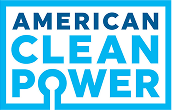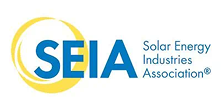AWG also offers a range of cables tailored to the unique needs of the renewable energy industry.
Our patented TowerGuard® CCA 2kV weighs and costs approximately 35% less than conventional copper RHH/RHW-2 cables. Its flexibility and chemical resistance make it ideal for use in both turbines and solar power generators.
These cables—and others in our catalog—are perfectly suited to demanding renewable energy applications
Commercial and Utility-Scale Solar Energy Production
Renewable Energy Cabling Systems
We have sold over 113 million feet of wire & cable for the renewable energy markets in the United States, Canada and worldwide.
AWG offers a full range of cables and wires suitable for solar power applications. For more details, review our Line Card.


Wiring Technology for Renewable Wind Energy
Turbines leverage power from the wind to provide clean, reliable energy. Today’s global wind power capacity sits at 743 gigawatts, according to the Global Wind Energy Council, and the industry continues to grow.
Wind turbines powering this production may be situated on land or offshore. Offshore turbines are significantly larger and generate more energy thanks to the massive power of ocean winds. Still, to maximize production, both kinds of turbines are often arranged into farms in very windy areas. However, they can also be installed at or near the site where the power will be used. In this case, they are referred to as distributed wind.
A wind turbine has propeller-shaped blades that spin around a rotor when they capture airflow. The rotor’s movement spins a generator, creating electricity.
The Instrumentation and Design Behind Large-Scale Wind Power
A typical turbine consists of blades connected to a rotor, both mounted on a tall shaft. The rotor connects to the nacelle, which is the box that contains the generator. Wind turbine cables are necessary to connect these components, but also to transport energy from the generator to its place of storage or use.
To function outdoors under varied conditions, wind turbine construction materials must be rugged while remaining lightweight. This is especially critical when considering offshore wind energy technology, which is buffeted by saltwater and high winds.


Within the nacelle of a turbine, cables should be flexible and be able to resist vibrations and chemical exposures. The cables used to transport power should be larger to accommodate higher voltage, and they should have high torsional strength to withstand winds and turbine rotation.
To ensure that a cable can withstand the tough conditions of wind power applications, look for Wind Turbine Tray Cable (WTTC) approval and high flex rating.
AWG Solar Power Wire & Cable Supplier
AWG’s durable cables are ideal for wind power applications, including our TowerGuard® line tailored specifically to wind applications. Full details on our wind power products are available on our line card.



Hardware & Accessories for Renewable Energy
Hardware and accessories play a crucial role in the renewable energy markets by facilitating the efficient and reliable generation, storage, and distribution of clean energy. In order for renewable energy technologies, such as solar panels, wind turbines, and batteries, to function optimally, they require various cable, hardware and accessories such as inverters, panel boards, combiner boxes, lugs, and splices, among others.
These components ensure that the energy generated by renewable sources is transformed into usable electricity, stored safely and efficiently, and delivered to the grid or end-users without interruption.
Additionally, the ongoing development and improvement of hardware and accessories for renewable energy markets are essential for driving down costs, increasing performance, and expanding access to renewable energy solutions for communities worldwide. Learn More
Our Solution

Battery Energy Storage Systems (BESS)
Battery energy storage systems have become increasingly important in renewable energy applications, particularly in solar and wind farm installations. These systems play a critical role in improving the reliability and stability of power grids, by storing excess energy produced during peak periods and supplying it back to the grid during periods of low demand.
In solar farm applications, BESS are used to address the variability of solar energy production caused by weather changes and daylight cycles. During periods of high sunlight, excess energy is stored in the batteries, which can be used to supply power when the sun is not shining. This allows solar farms to provide consistent and reliable energy output, even during periods of low sunlight.
Similarly, in wind farm applications, BESS can help address the intermittent nature of wind energy production. During periods of high wind speed, excess energy is stored in the batteries, which can be used to supply power when wind speeds are low. This helps to maintain a steady flow of energy to the grid, ensuring a reliable and stable power supply.
Furthermore, BESS can also be used to provide additional services to the grid, such as frequency regulation and grid stabilization. This is particularly important in areas with high levels of renewable energy penetration, where the variability of renewable energy sources can impact the stability of the power grid.
Overall, battery energy storage systems are an essential component of modern renewable energy systems, providing a means of balancing supply and demand, improving grid stability, and ensuring reliable and consistent energy output. As renewable energy continues to grow, BESS will play an increasingly critical role in the transition to a cleaner and more sustainable energy future.
AWG offers solutions for BESS including our BatteryGuard® Copper DLO cable.
How Solar Cables Support Large-Scale Renewable Energy Equipment
Solar panels themselves consist of frames that contain glass-covered solar cells. These cells are the units that generate charge in response to sunlight. The solar panels interconnect, resulting in strings, and lead back to a combiner box. Monitoring systems track energy yield and alert technicians to faults. These components work together to create solar energy for commercial buildings.

The solar industry efficiently produces energy for a wide range of commercial sectors, each of which benefits from diversifying its energy sources.
Commercial solar power relies on large-scale solar photovoltaic (PV) power plants, which draw energy from hundreds of thousands of discrete panels. When the sun strikes one of these panels (or modules), its PV cells absorb the energy, generating an electrical field. The electricity then passes through an inverter on its way to a battery. Photovoltaic wire, or PV wire, is a single insulated conductor used to interconnect the solar panels in a solar farm.

Neither individual panels nor solar farms could function without a network of durable solar power wire, cable, hardware and equipment.
For this vital interconnection, solar energy wire and cables are used to connect these units and distribute the generated current. PV wiring is suitable for use in grounded and ungrounded photovoltaic power systems, generally rated up to 2 kV, in free air, raceways or direct burial in accordance with the NEC (United States) or Canadian Electric Code (CE). When leveraging open air installation wires are tied to racking, offering a fast and cost-effective solution.
Renewable Energy Wire & Cable Products
Proud members of...









